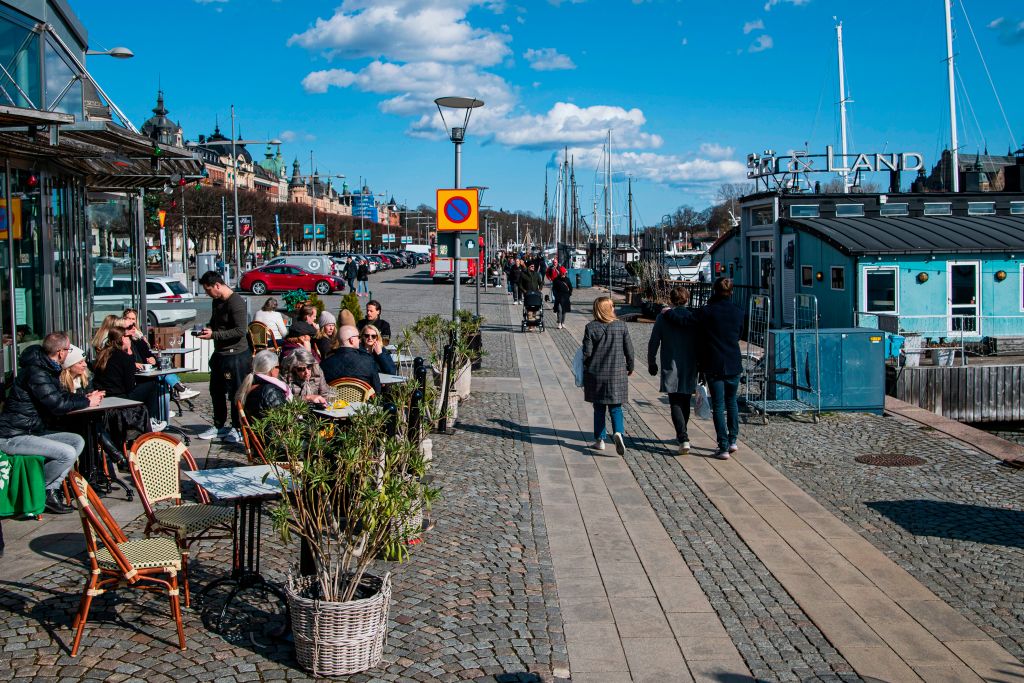The science of epidemiology relies a lot on modeling because, for obvious reasons, controlled experimentation would be unethical. But in the case of COVID-19 we do have something approaching a real-life experiment — in that Sweden has declined to follow other European countries into lockdown. Instead, it has followed a policy which might be summed up as social distancing-lite. Gatherings of more than 50 people have been outlawed, closing theaters and putting an end to sports events. But children up to the age of 16 are still attending school, stores and restaurants are still open — albeit with rules preventing people standing up at the bar — and no police officer is to blow a whistle at you for sitting on a park bench.
For some, Sweden is taking a measured approach which allows it to fight COVID-19 without ruining its economy; for others it is carrying out a dangerous gamble with people’s lives. The debate rages within Sweden itself, with the country’s chief epidemiologist, Anders Tegnell, having to defend his policy against increasingly loud calls for a Swedish lockdown. As for the evidence we have so far, it can be used to argue it either way. As of Saturday, Sweden had suffered 150 deaths from COVID-19 per million population. That is significantly more than its locked-down Nordic neighbors — Denmark was on 60, Norway on 30 and Finland on 17 — but a long way short of other European countries which have been in lockdown for weeks. Britain has suffered 228 deaths per million, France 296, Italy 384 and Spain 441. The worst country, incidentally, is none of these — it is Belgium, with 490 deaths per million.
Tegnell is not a maverick; his views on how best to handle COVID-19 are backed by other epidemiologists in Sweden and around the world. One of them is the man who held his job between 1995 and 2005 — Johan Giesecke, now professor emeritus at the Karolinska Institute and an unpaid adviser to the World Health Organization. ‘We should wait a year before we start passing judgment on the different approaches to coronavirus,’ he says. While some countries might have fended off the worst of the epidemic for now, they face a longer battle against the disease because their populations are further away from gaining immunity. Giesecke supports Tegnell’s claim — made in a debate this weekend on Norwegian TV — that Stockholm could have built up a good degree of herd immunity by the middle of May. Community antibody tests are still being analyzed, he says, but there is some indication that ‘10, 20, 30 percent, maybe more’ of those in the city have already had the virus, many of them unaware of it.
If those figures are right, then it would add to evidence from Germany and California suggesting that COVID-19 is far more easily spread — but considerably less deadly — than many countries’ policies on the epidemic have assumed. It would blow out of the water the Imperial College paper from March 16, which inspired the UK government to undertake a U-turn, abandoning a Swedish-style approach and taking the country into lockdown.
***
Get three months’ free access to The Spectator USA website —
then just $3.99/month. Subscribe here
***
Giesecke was not impressed with the Imperial paper. It failed to take into account, he says, that a country can rapidly increase its number of critical care beds. In Sweden, he says, they have increased threefold, which has reduced the need to ‘flatten the curve’ of the epidemic. Moreover, he says, ‘the assumption they made for the proportion of cases that are asymptomatic was too low.’ The paper made the assumption that two thirds of cases were ‘sufficiently symptomatic’ for people to self-isolate — in other words that in a third of cases infected individuals would not know they had the virus. Subsequent data from Italy and China has suggested that 50-80 percent of cases are asymptomatic.
‘The Imperial paper was not peer-reviewed,’ says Giesecke. ‘This was not normal scientific practice.’
Boris Johnson’s government has persistently said that it is ‘following the science’ on coronavirus, but what has become increasingly clear as the crisis has progressed is that there is no one ‘science’. Epidemiologists are themselves deeply divided on how to handle it. ‘I think it has a lot to do with modeling,’ says Giesecke. ‘In the UK you have too much faith in modeling — not just on coronavirus but on other things. Models are no better than the assumptions that are put into them.’
On what evidence basis, I ask him, is the Swedish approach based? He turns the question around. ‘We are saying that you should not adopt measures for which there is not good evidence. There is good evidence that washing hands makes a big difference but border controls don’t make a difference, and on closing schools the jury is still out.’
A coronavirus vaccine should be more straightforward, he says, than an HIV vaccine — which in the 1980s was widely claimed to be four or five years away, but which we still don’t have. A drug to prevent coagulation of blood in patients’ lungs is likely to happen sooner, and could make a big difference to death rates. But there is no point in trying to stop coronavirus, he says. It is likely to gain, like the common cold, a long-term presence in the human population. But by the end of summer he expects the measures against coronavirus to be over in most European countries. ‘But in those countries with lockdowns it will take longer,’ he says.
As for the legacy of COVID-19, we are likely to be better prepared in future. One thing, he says however, will never go back to normal: the management of old people’s homes. ‘Either people will live more in their own homes or they will live in homes with better-trained staff. In Sweden carers are paid-for by the hour, and aren’t paid if they have to stay at home because they are ill.’ One of the reasons, he says, that Norway has had a lower death rate is that its care homes are smaller, so the disease has not been able to spread as quickly as it has done in Swedish care homes.
And the ultimate result of the Swedish experiment? Ultimately, he expects, most countries will have much the same mortality rate. Sweden, though, the government of Stefan Löfven will be hoping, might just have bit more of an economy left.
This article was originally published on The Spectator’s UK website.


















